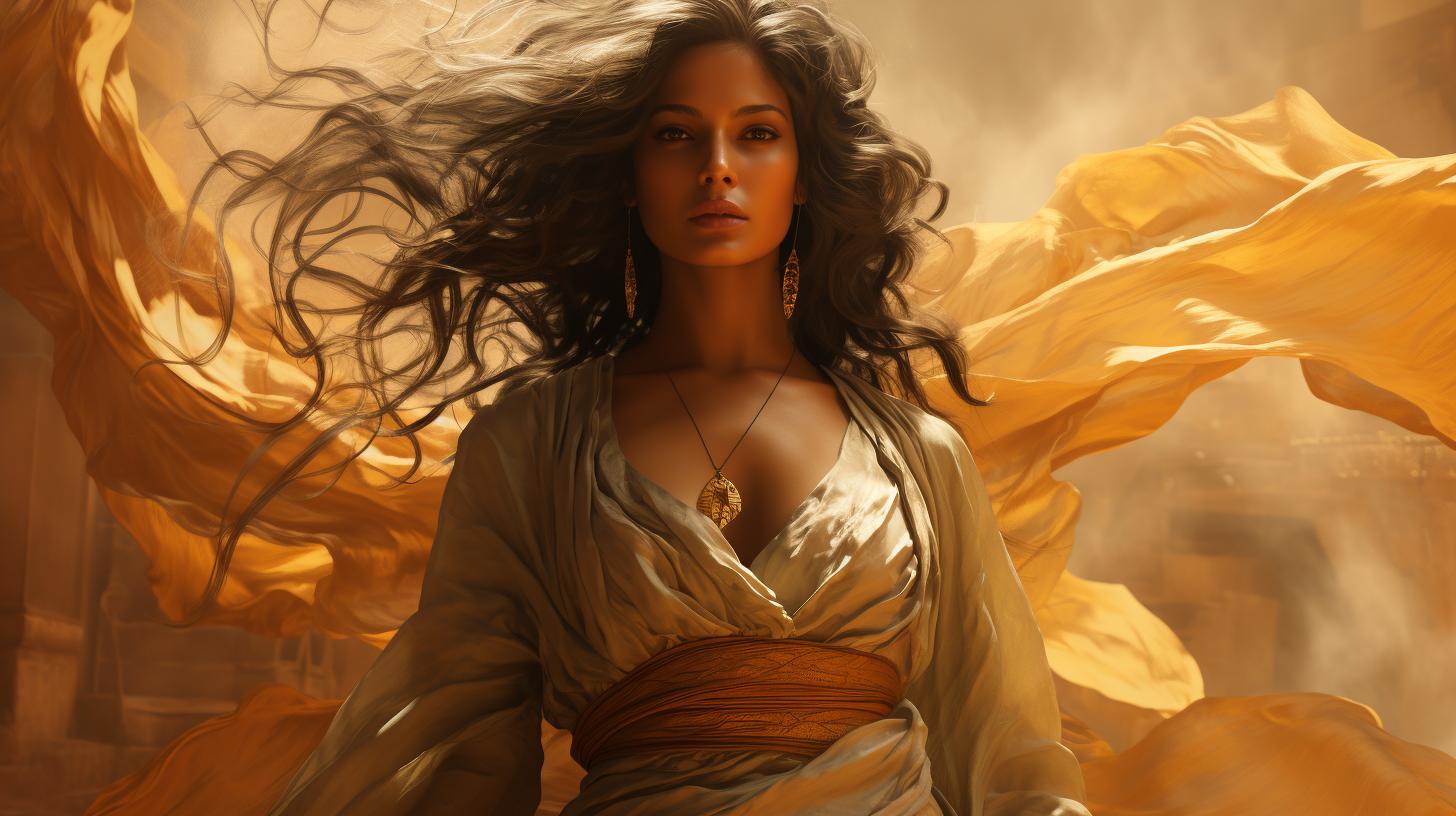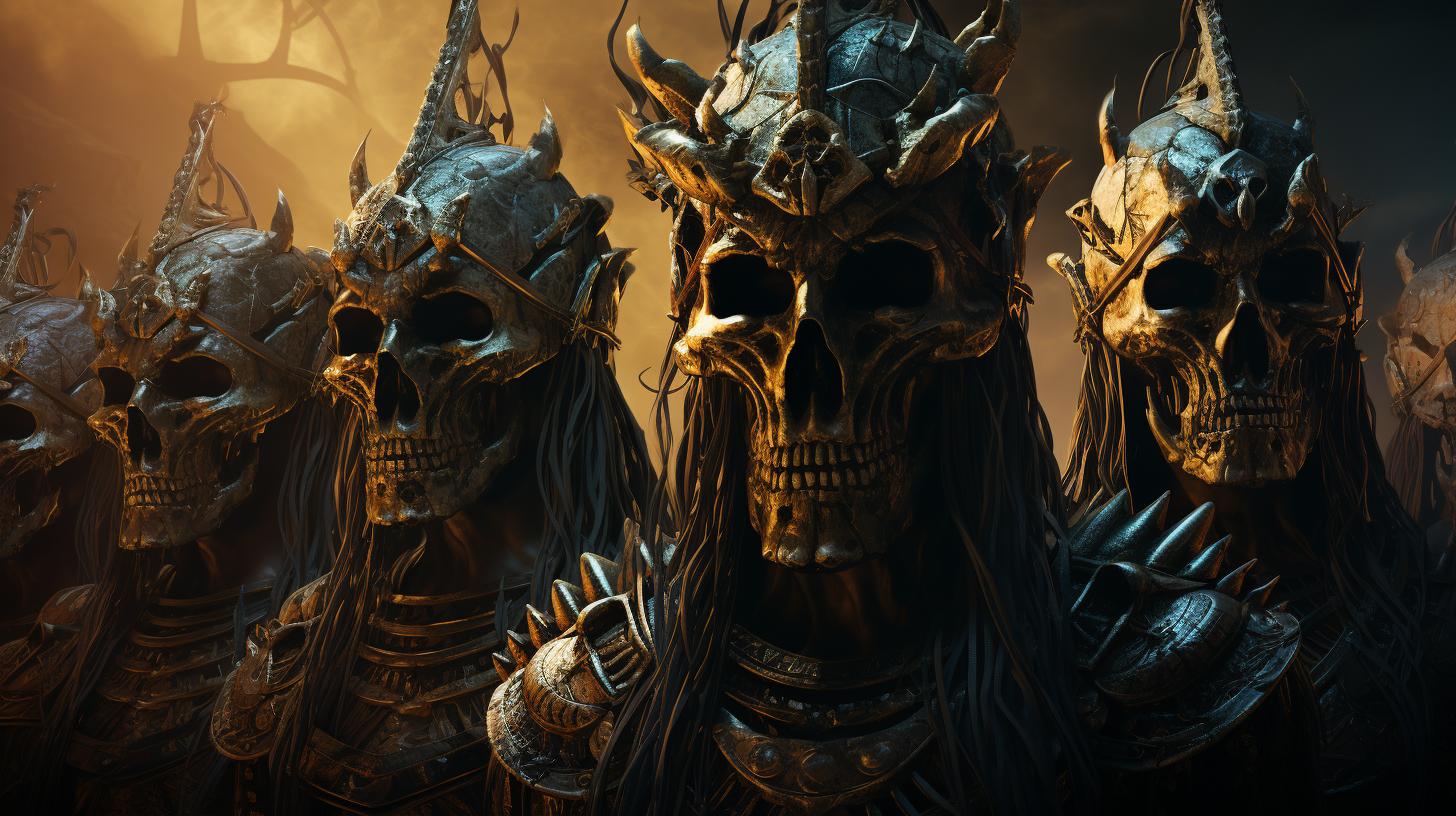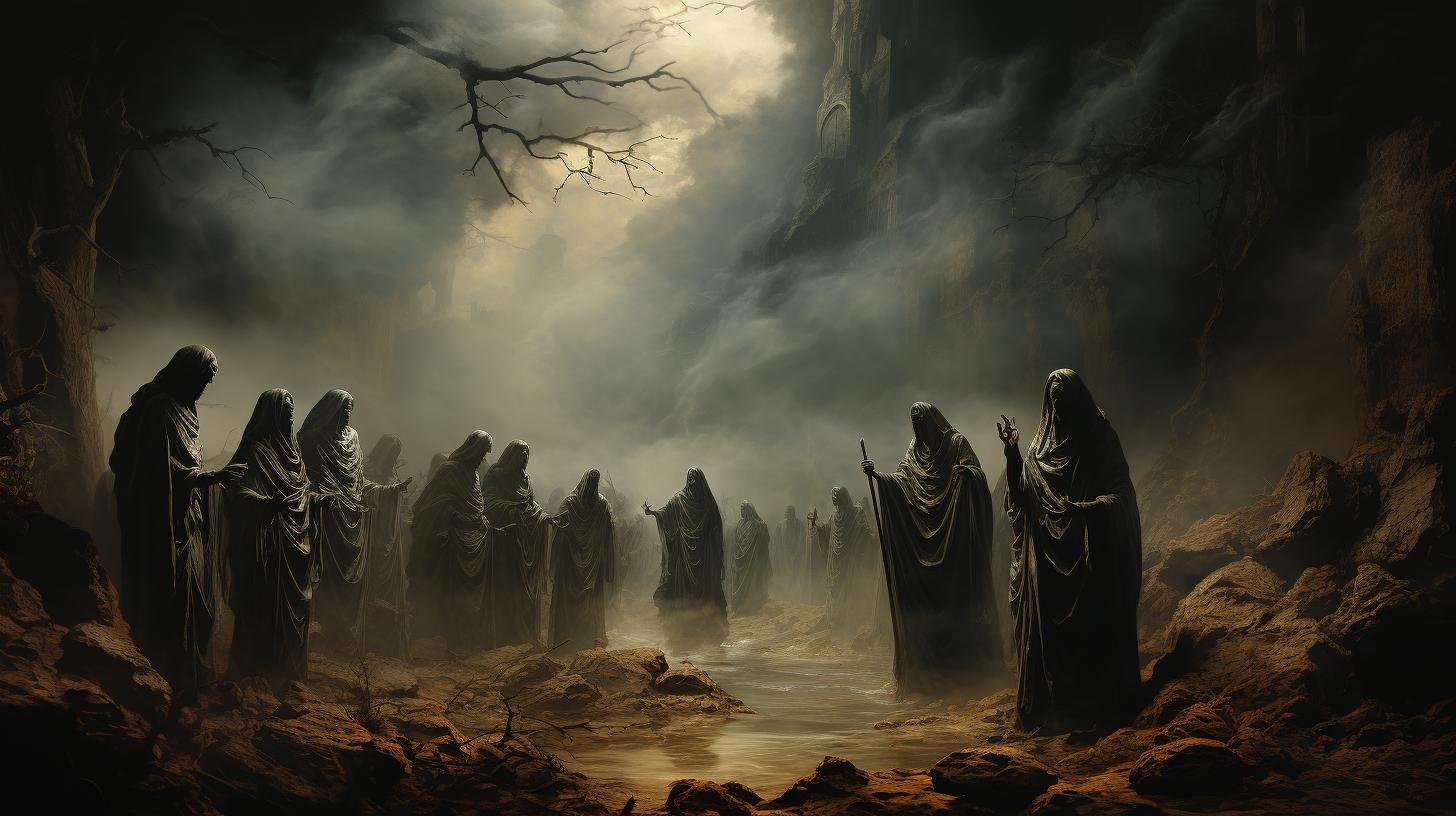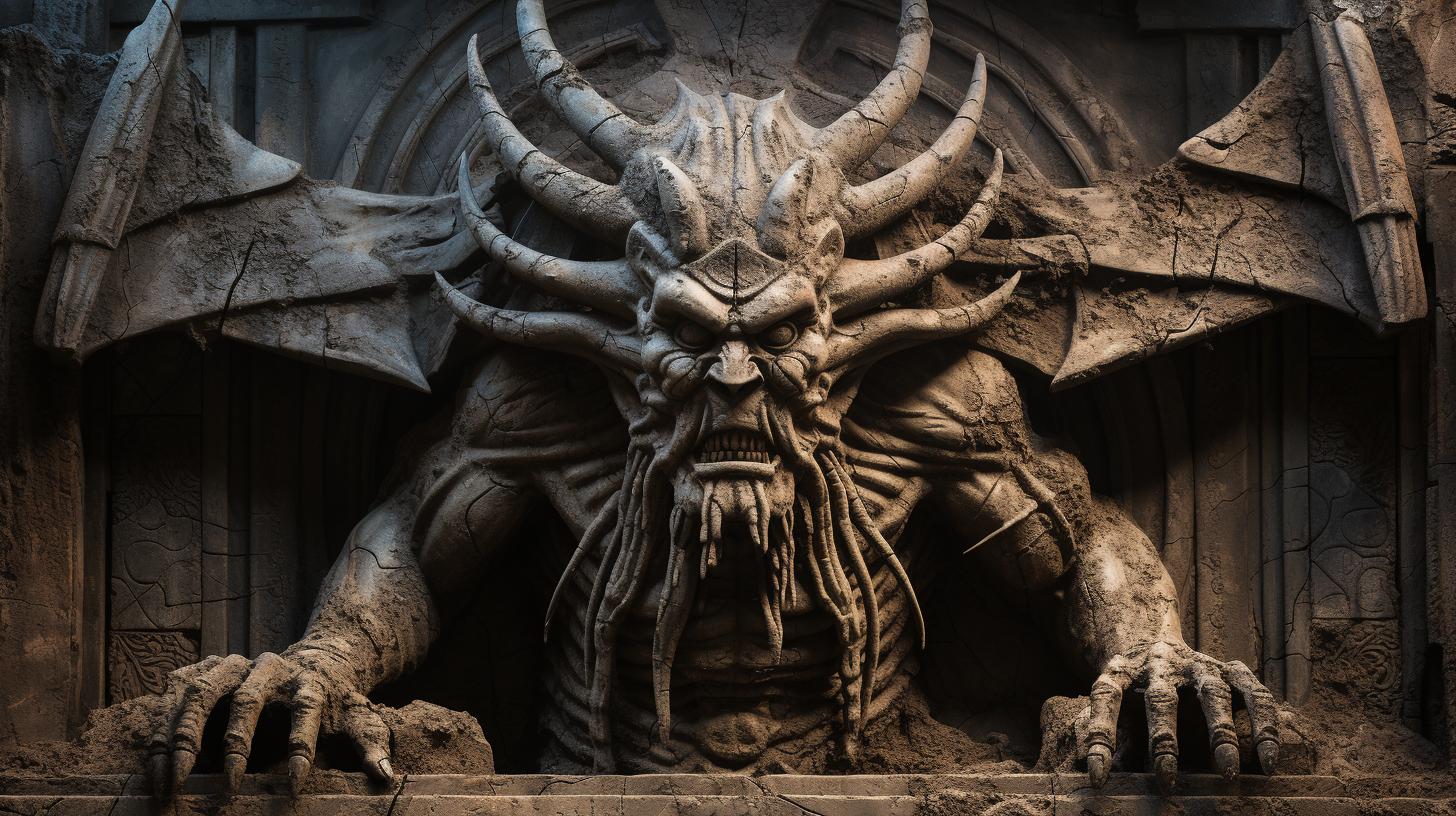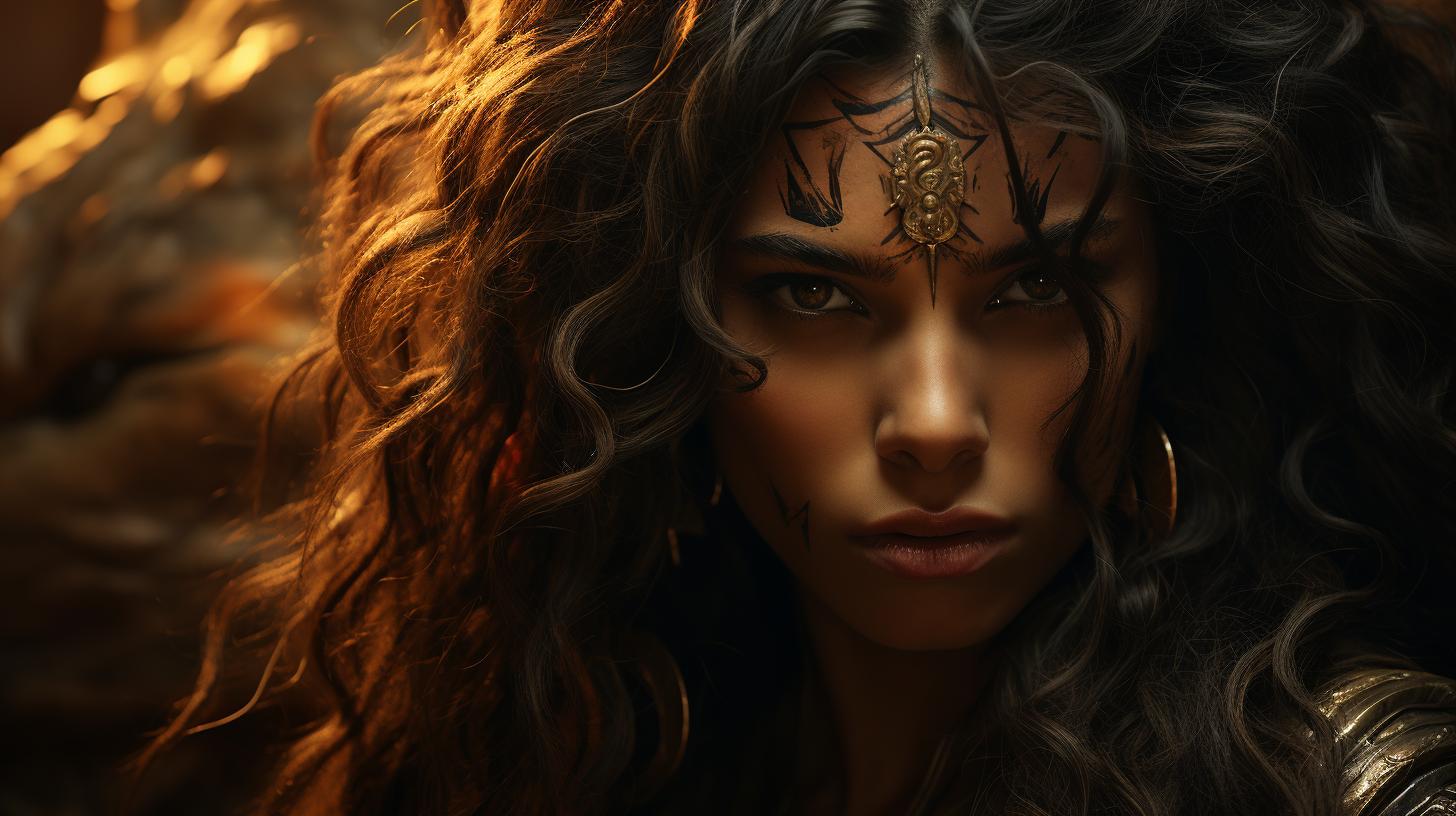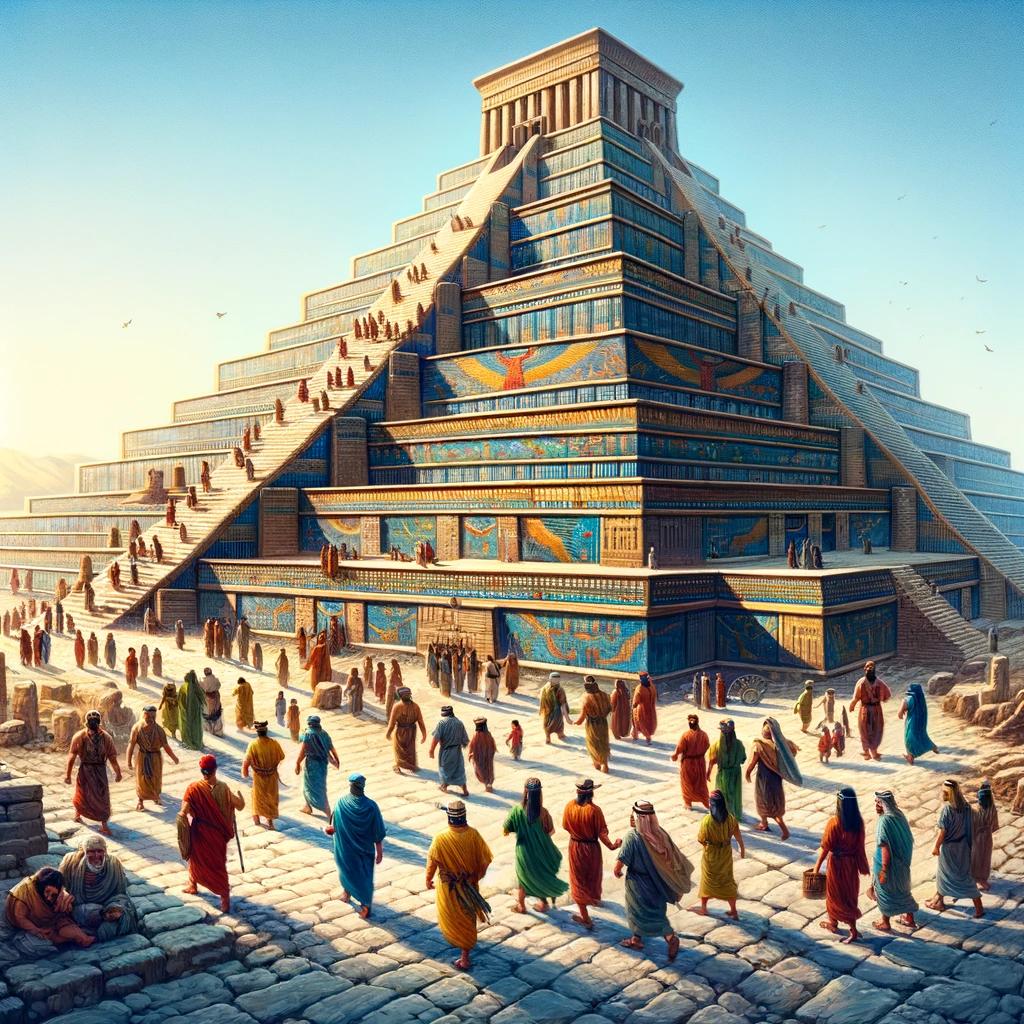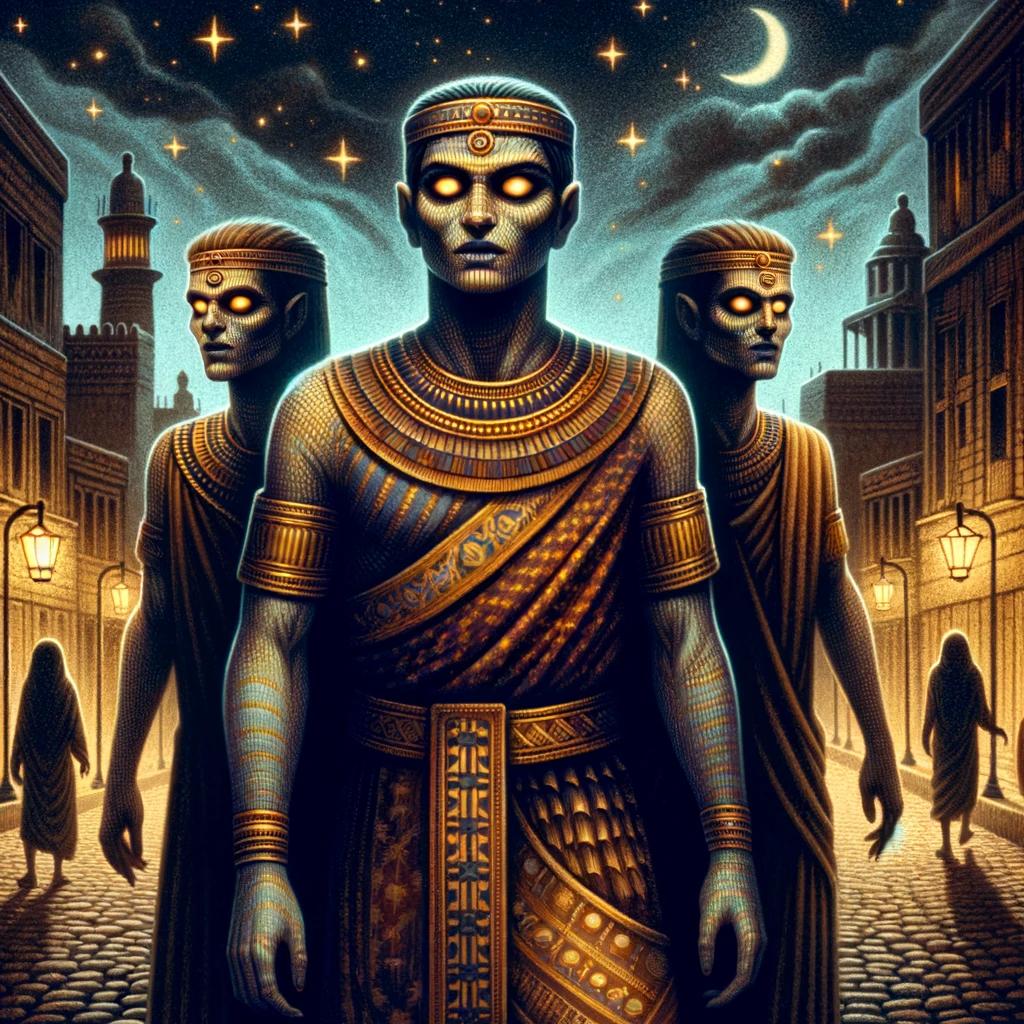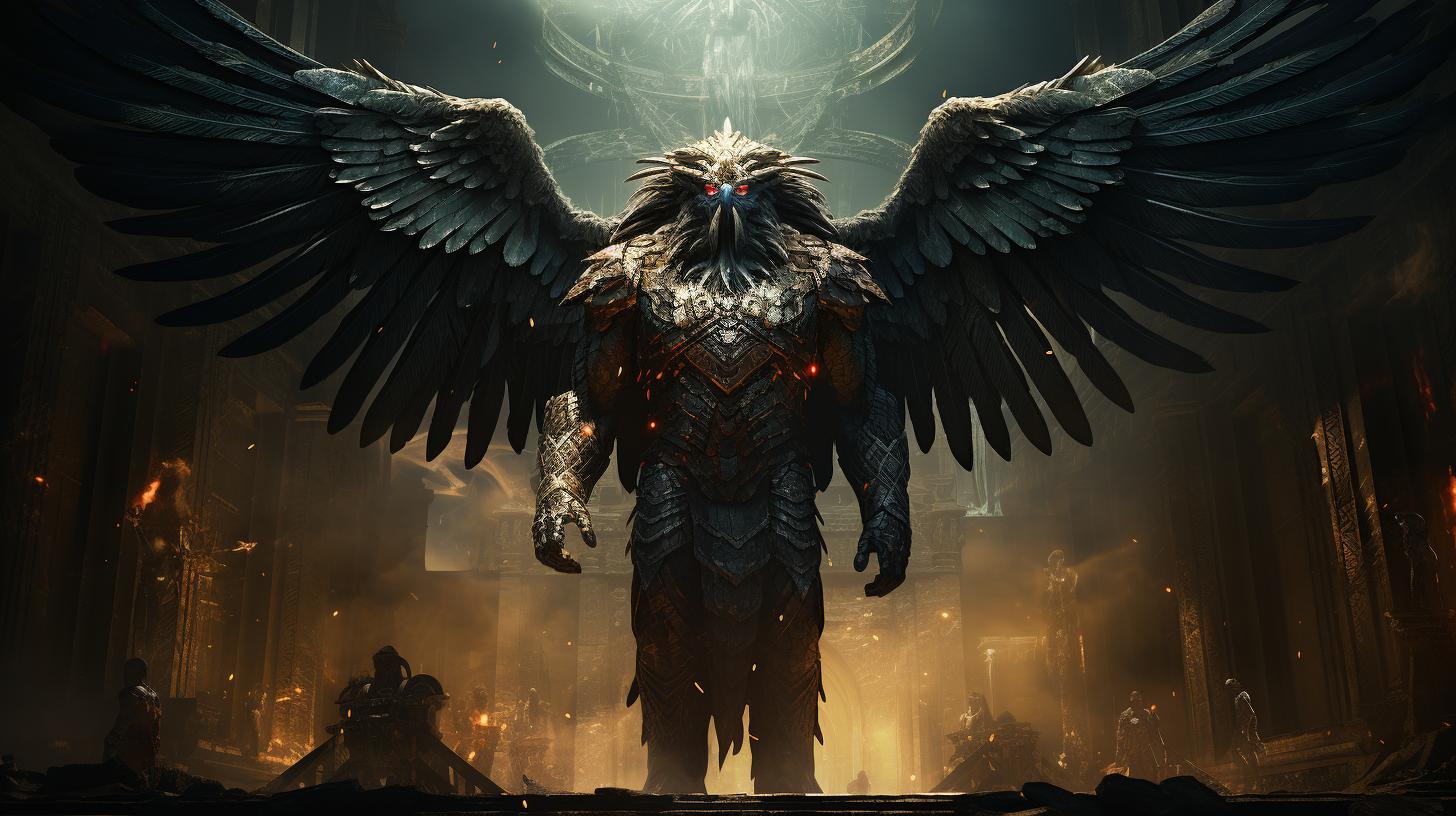Lilitu Demon: Unraveling the Mysterious Mythology Surrounding this Ancient Figure
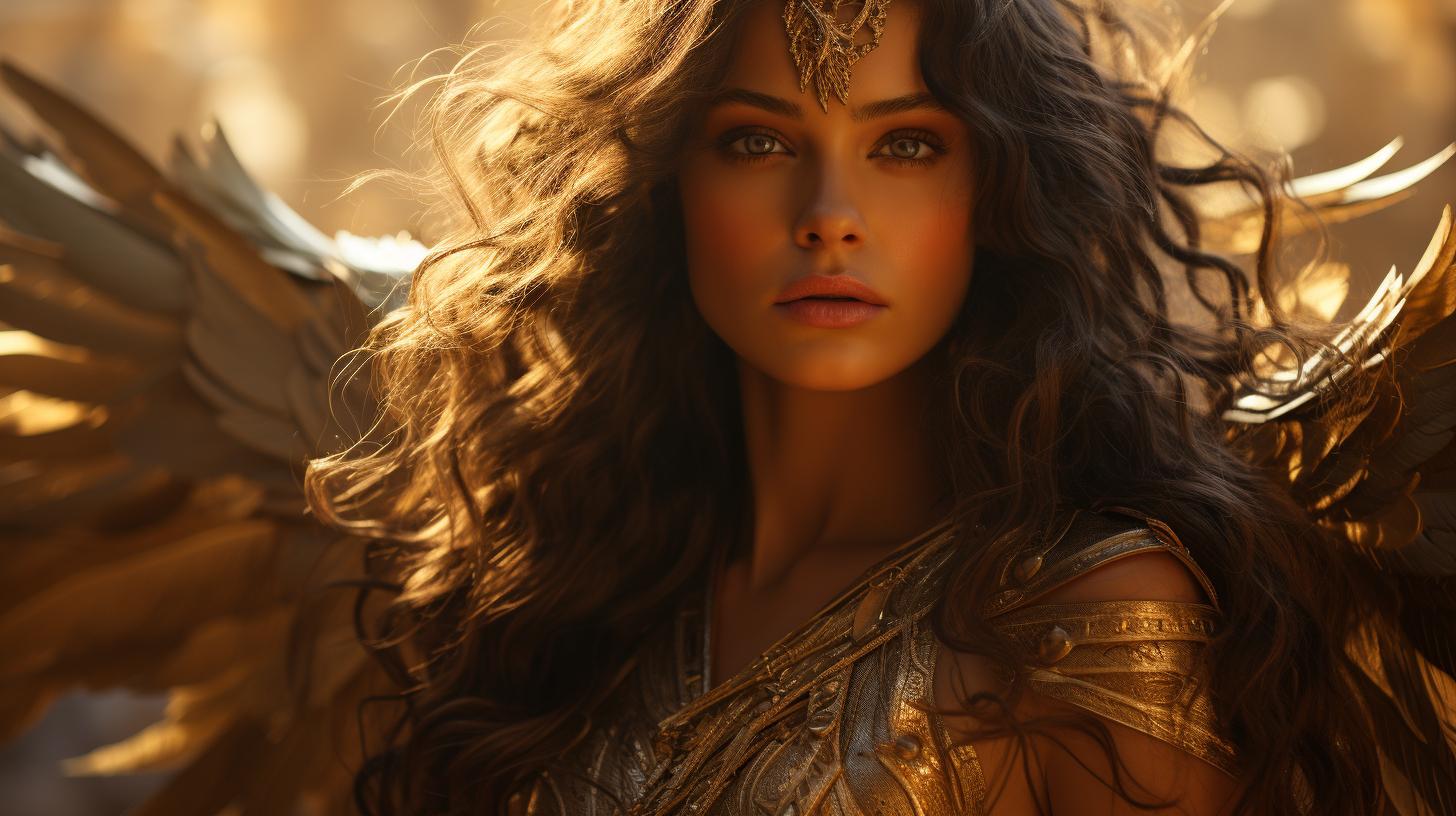
The mythology of the Lilitu demon, specifically the figure of Lilith, holds an intriguing place in Mesopotamian and Jewish lore. Considered the first wife of Adam in rabbinic literature, Lilith’s narrative is deeply entwined with themes of rebellion, freedom, and the dark aspects of feminine power.
Her story, originating from the ancient Mesopotamian tales of Lilitu spirits, transcends cultures to become a cornerstone of lilitu meaning and symbolism.
Described as dangerous and seductive, Lilith is associated with luring men and stealing babies.
Her name derives from ancient Akkadian words for spirits or demons. Lilith’s significance in Jewish tradition has been widely discussed, sparking debates among scholars about her role as a figure of independence and power versus her depiction as a demon in the Hebrew Bible and subsequent rabbinic literature.
This article delves into various facets of Lilith’s mythology, from her origins as a lilitu in Mesopotamia to her complex role in Jewish folklore, exploring her lasting impact on art, literature, and popular culture.
Overview of Lilitu Demon Mythology
In Mesopotamian and Jewish folklore, the Lilitu demon, particularly the figure of Lilith, holds a significant place in mythology and legends. Lilith, considered the first woman before Eve, was created from the same clay as Adam, symbolizing her as his equal, not a subordinate.
Her story reflects the early narratives of the creation of humans and the dynamics between male and female energies in the lore of the ancient world.
However, Lilith’s refusal to be subservient to Adam and her choice to leave the Garden of Eden mark her as a figure of independence and rebellion.
This departure from the original design of harmony in the Garden introduces Lilith not just as the first woman but as the original rebel, paving the way for discussions about equality, autonomy, and the complexities of relationships in the early stories of humanity.
Lilith’s association with the night and creatures of darkness, as well as her supposed alliance with Samael, a figure often associated with the adversarial force in Jewish mythology, emphasizes her role as a powerful and independent entity.
Her depiction varies, with some narratives presenting her as a serpent-like figure, reflecting the common motif of the serpent in creation stories, such as in the Epic of Gilgamesh and the Hebrew Bible’s account of Adam and Eve’s temptation.
The connection between Lilith and the Akkadian Lilitu is significant, illustrating her deep roots in the mythology of the ancient Near East. The Lilitu were understood as female demons or spirits associated with wind and were believed to be responsible for disease, death, and nightmares.
This link establishes Lilith as a continuation of a long tradition of powerful female figures in ancient mythology, embodying the dual nature of creation and destruction, life and death.
Throughout the years, Lilith’s story and characteristics have been subject to various interpretations and have served as inspiration in literature and art.
She continues to captivate the interest and curiosity of those who delve into these ancient traditions, exploring the themes of independence, power, and the complex nature of the feminine divine.
The Mythical Character of Lilith
The figure of Lilith is an intriguing and complex entity within Mesopotamian and Jewish mythology.
She plays a significant role in the lore surrounding demons and supernatural beings. This section will delve into the multifaceted nature of Lilith’s character, exploring her as Adam’s first wife, her subsequent rebellion, and her enduring legacy in the mythology of the region.
In Jewish tradition, Lilith is portrayed as the initial wife of Adam, created from the same clay as him and intended to be his equal. This narrative sets the stage for a profound exploration of the themes of partnership, equality, and the dynamics between male and female energies in the earliest human experiences.
Unlike Eve, who was fashioned from Adam’s rib, Lilith was made in his own image, emphasizing her status as an equal partner rather than a subordinate.
Lilith’s Rebellion and Departure
Lilith’s refusal to submit to Adam’s authority is a seminal moment in her mythology, highlighting her as a symbol of independence and autonomy. Her departure from Eden, driven by a desire for equality and her refusal to be dominated by Adam who was the first man, marks a significant divergence from the traditional narrative of Adam and Eve.
It is said that after leaving the garden, Lilith encountered the archangel Samael, and together, they became symbols of resistance and complexity within the tapestry of Jewish and Mesopotamian mythologies. This encounter with Samael, and the partnership they formed, is a testament to Lilith’s determination to assert her own identity and destiny, outside the confines of Eden for not conforming to the expected subservience.
Understanding the Lilitu Demon
The Lilitu demon, particularly embodied by the mythical character Lilith, holds a significant place in Mesopotamian and Jewish folklore. Her story, originating from the Hebrew word for night creatures, offers unique insights into the realm of demonology, exploring the nuances of gender dynamics, rebellion against divine authority, and the intricate relationships between the divine, the demonic, and humanity.
Lilith’s tale, rich with themes of independence, equality, and the complexities of her character, continues to inspire and provoke thought across cultures and generations, serving as a pivotal figure in lilitu mythology and the broader narrative of ancient rebellious spirits.
Legendary Traits and Characteristics
Lilith’s portrayal encompasses a combination of intriguing traits and characteristics, making her a quintessential example of a lilitu sleep demon. Often depicted as powerful and seductive, she embodies a dangerous allure that captivates and entices.
Legends attribute her with supernatural abilities, such as shape-shifting, which allows her to assume multiple forms, including that of a creature with wings and talons, further emphasizing her connection to the dark and mystical aspects of the ancient world.
Lilith’s Shapeshifting Abilities
One of Lilith’s defining attributes lies in her shapeshifting abilities. This mythological element adds a layer of complexity to her character, enabling her to metamorphose into various forms. She possesses the ability to transform into a wisp of smoke, a seductive serpent, or even a nightmarish creature, embodying the fears and superstitions of the Sumerian and early Mesopotamian cultures from which she originated.
This shape-shifting power enhances her ability to seduce, deceive, and elude capture, making her an elusive and enigmatic figure in the folklore surrounding the Lilitu demon.
Demonizing Lilith in Folklore
- Folklore often portrays Lilith as a malevolent and demonic figure, associated with the ancient demons of Mesopotamia.
- Legends depict her as preying on unsuspecting men, seducing them and luring them into a dark and treacherous realm, akin to the lilitu Mesopotamia myths of female spirits haunting the night.
- She is believed to steal newborn babies, leaving grieving mothers in despair, a narrative that reflects her complex role as both a mother figure and a bringer of death.
- Lilith’s association with the occult and her representation as a dangerous seductress have contributed to her demonization and the perception of her as an entity to be feared, a theme that has persisted into the Middle Ages and beyond.
The varied depictions of Lilith in folklore form a tapestry of fear, fascination, and caution, shedding light on the complex nature of the Lilitu demon and her enduring legacy in the myths and legends that span from the ancient world to modern interpretations.
The Difference Between Eve and Lilith
Eve as the Second Wife of Adam
Eve is commonly known as the second wife of Adam in the biblical narrative, a figure created from one of Adam’s ribs to be his companion and partner in the paradisiacal Garden of Eden.
Unlike Lilith, Eve is depicted as subservient to Adam and obedient to God’s commands, embodying the traditional virtues of motherhood, fidelity, and obedience.
Contrasting Attributes and Roles
While both Eve and Lilith are associated with Adam, their characteristics and roles diverge significantly. Eve represents submission, obedience, and the traditional view of femininity. In contrast, Lilith embodies independence, defiance, and the rejection of oppressive patriarchal structures.
She challenges traditional gender roles and refuses to be confined or dominated by anyone, including Adam and the restrictive paradigms of her time.
Eve’s story revolves around the Fall, where she and Adam eat the forbidden fruit, leading to their expulsion from the Garden of Eden.
Lilith, on the other hand, rebels against the restrictive nature of the Edenic environment, rejecting subordination and embracing her own desires and autonomy.
Eve is often portrayed as the mother of humanity, linked to concepts of fertility, childbirth, and nurturing.
Lilith, conversely, represents a more complex and mysterious figure, a daughter of the night who embodies darkness, sensuality, and temptation, challenging the simplistic dichotomy of good versus evil and inviting a deeper exploration of the nuances of female independence and power.
- Eve: Represented as obedient, submissive, and motherly.
- Lilith: Embodies independence, defiance, and a rejection of traditional gender roles.
- Eve’s story centers around the Fall and her role as the mother of humanity.
- Lilith’s narrative focuses on her rebellion against patriarchal structures and the pursuit of her own desires.
Understanding the contrasting attributes and roles of Eve and Lilith helps us grasp the intricate dynamics and complexities within their respective mythologies, offering a richer, more nuanced understanding of the ancient texts that continue to influence modern perspectives on gender, power, and autonomy.
References to Lilith in Biblical Texts
Within biblical texts, references and allusions to Lilith can be found, shedding light on her presence in ancient literature and religious traditions. These allusions provide insight into the complex character of Lilith, who was the first woman created from the earth, just like Adam.
The Mention of Lilith in Isaiah
The name Lilith appears in the book of Isaiah, where it is included in a list of animals or supernatural creatures:
- Lilith is attributed with characteristics such as being a creature of the night or a screeching owl.
- This brief mention in Isaiah provides one of the earliest references to Lilith in Hebrew texts, suggesting that Lilith was a creature associated with the ancient and mystical aspects of the divine feminine.
Lilith in Jewish Mythology and Literature
As time progressed, Jewish mythology developed the character of Lilith further, expanding her role in various texts, including the Aggadah and the Zohar.
- These later writings depict Lilith’s disagreements with Adam, her husband, and her relationship with the angel Samael, becoming identified with her as part of the Lilith myth.
- Lilith’s rebellious nature and departure from Eden for not being subservient to Adam highlight her as a symbol of female autonomy and resistance.
Her defiance against the divine order to bring her back to Eden underscores her determination to forge her own path.
Moreover, Lilith’s influence extended beyond religious texts, finding a place in Jewish folklore and literature, where her mystical attributes and seductive nature were often explored.
Lilith the ancient, as a symbol of rebellion and liberation, challenges the traditional narratives of submissiveness associated with Eve, offering an alternative representation of the female experience.
Lilith continues to provide fertile ground for interpreting the complexities of divine feminine figures and the concepts of rebellion and liberation.
The references to Lilith in biblical texts and subsequent mythological writings highlight her enduring presence in ancient traditions and narratives, leaving an indelible mark on religious and cultural discussions throughout history.
Interpretations and Controversies Surrounding Lilith
In the realm of Lilith’s mythology, scholars have engaged in extensive debates regarding the origins and nature of this enigmatic figure. Various theories and interpretations have emerged, each presenting a unique perspective on Lilith’s character, including her role as the first woman, created by God from the earth, making her Adam’s equal.
Scholarly Debates on Lilith’s Origins
One ongoing debate revolves around the connection between the Lilith of Jewish tradition and the ancient Akkadian demoness Lilītu. While some scholars argue for a strong relationship between the two figures, others suggest a minimal or even non-existent connection, questioning whether the narrative of Lilith as the rebellious first wife of Adam, who left him and was associated with Samael and the angels Sansenoy and Semangelof, originated from the Hebrew tradition or was influenced by earlier Mesopotamian beliefs about the Lilitu.
Lilith in Kabbalistic and Mystical Traditions
Within Kabbalistic and mystical traditions, Lilith’s significance takes on new dimensions. She is often associated with the mysterious and dark aspects of the divine feminine. Kabbalists explore her symbolisms, intertwining her with concepts such as the Shekhinah, a mystical female presence representing God’s immanence in the world, and examining the tension between her roles as Lilith the ancient figure of myth and Lilith the daughter of the divine, embodying both aspects of creation and destruction.
Some mystical traditions also view Lilith as a powerful being closely associated with sexual energy and desire, representing the untamed and wild aspects of the female, challenging Adam and the patriarchal structures by refusing to return to Eden and asserting her independence and equality with him.
She is seen as embodying the taboo and forbidden aspects of human experience, challenging traditional norms and boundaries. The exploration of Lilith’s symbolism within mystical frameworks further contributes to the complex and multifaceted interpretations of this captivating character.
As scholars delve into these interpretations and seek to unravel the mysteries surrounding Lilith, the controversies surrounding her character persist. While some embrace Lilith as a symbol of female empowerment, others view her as a dangerous seductress or an embodiment of primordial chaos.
These debates not only shed light on the diverse perspectives surrounding Lilith but also highlight the enduring fascination and intrigue she continues to evoke.
Lilith’s Influence in Art, Literature, and Popular Culture
The captivating persona of Lilith has left an indelible mark on various forms of artistic expression, literature, and modern media.
Artists throughout history have been inspired by her enigmatic nature and depicted her in diverse ways. From ancient sculptures and paintings to contemporary digital art, Lilith’s image has been brought to life, often showcasing her seductive and dangerous allure.
Depictions of Lilith in Artworks
In visual arts, Lilith has been portrayed in different styles and mediums, reflecting the artistic trends of each era. Renaissance artists depicted her as a seductive and alluring temptress, often showing her with sensual features and captivating beauty.
Symbolist artists of the late 19th and early 20th centuries embraced her as a representation of feminine power and rebellion, exploring her darker aspects. Today, contemporary artists continue to reinterpret Lilith, combining traditional and modern elements to create thought-provoking and visually stunning pieces.
Lilith’s Role in Modern Literature and Media
Lilith’s allure extends beyond the realm of visual arts and has made a significant impact on literature and popular culture. Countless authors have incorporated Lilith as a character in their works, ranging from classic literature to modern fantasy novels.
Through these narratives, Lilith embodies themes of female empowerment, rebellion against societal norms, and the complexity of human desires. Moreover, in film, television, and video games, Lilith has been depicted as a powerful and alluring figure, capturing the imagination of audiences around the world.
In recent years, Lilith’s mythology has found resonance in feminist and cultural movements. Many view her as a symbol of feminine strength and independence, challenging traditional roles and expectations placed upon women.
This reinterpretation of Lilith has sparked important discussions about gender dynamics, sexuality, and the reclaiming of female power in various forms of artistic expression.
Overall, Lilith’s presence in art, literature, and popular culture continues to fascinate and inspire. Whether through the brushstrokes of a master artist or the pages of a captivating novel, her influence endures as a symbol of individuality, rebellion, and the ever-evolving nature of mythology in the modern era.
Exploring the Continuing Interest in Lilith’s Mythology
The mythology of Lilith, the Lilitu demon, continues to intrigue and captivate people in contemporary times. The multifaceted nature of Lilith’s character and her deep-rooted symbolism have fostered ongoing discussions and interpretations.
This section delves into the modern relevance and various interpretations surrounding Lilith, as well as her connection to cultural and feminist themes.
Contemporary Relevance and Interpretations
As society evolves, so does the interpretation and relevance of Lilith’s mythology. Many scholars and artists have explored her story through a contemporary lens, seeking to unravel her complexities and understand her enduring appeal.
Some interpret Lilith as a symbol of feminine empowerment, defiance against oppressive norms, and reclaiming one’s autonomy. Others view her as a cautionary figure, representing the consequences of challenging societal conventions.
In modern literature and media, Lilith often appears as a powerful and enigmatic character, inspiring a wide range of interpretations. Writers, filmmakers, and artists continue to draw inspiration from her story, provoking thought and sparking conversations about gender roles, sexuality, and the struggle for autonomy.
Lilith in Cultural and Feminist Themes
Lilith’s mythology has also found resonance within cultural and feminist movements, particularly in exploring themes of gender equality, female sexuality, and the reclaiming of suppressed voices. Some consider Lilith as an archetype of the rebellious female figure challenging patriarchal structures.
- Lilith’s portrayal in various cultures: Throughout history, Lilith has found her place in different cultures and religions. Her story has been reinterpreted and incorporated into various belief systems, each offering unique perspectives on gender dynamics and female agency.
- Feminist reinterpretations: Feminist scholars and activists draw upon Lilith’s mythology in their work, using her narrative as a tool to question and dismantle traditional gender roles and norms.
- Lilith in art and literature: Artists and writers often employ Lilith’s character as a symbol of rebellion, exploring themes of female empowerment, sexual liberation, and the inherent strength of women.
In conclusion, the continuing interest in Lilith’s mythology is a testament to her enduring significance as a complex and thought-provoking figure.
Through contemporary interpretations and exploration of her role within cultural and feminist contexts, Lilith’s story continues to inspire discussions about gender, power, and the human experience.
Wrapping Up the Lilitu Demon Mythology
Appreciating the Complexity of Lilith’s Character
Lilith, a captivating figure in Mesopotamian and Jewish mythology, presents a complex character that continues to intrigue scholars and enthusiasts alike.
Her defiance of patriarchal norms and refusal to submit to Adam highlights her independent spirit and rebellious nature. Not just a figure of myth, Lilith was the subject of various ancient narratives, including the Epic of Gilgamesh, where themes of femininity, power, and independence are explored.
Lilith’s portrayal as a dangerous seductress and baby thief further adds to the layers of her character, positioning her as a creature with her own distinct agency and path.
As we delve deeper into the mythology, we come to appreciate the multifaceted aspects of Lilith’s persona.
She embodies both the allure of femininity and the darkness associated with demons. This intricate blend of attributes showcases her enigmatic nature, leaving room for various interpretations and connections, including those to other mythological figures and narratives, suggesting that Adam had companions before Eve, and that these narratives intertwine with the broader tapestry of creation stories where “god created man in his own image,” making Lilith an integral part of these ancient discussions.
The Enduring Fascination with Lilith’s Mythology
The mythology of Lilith, and the broader concept of Lilitu demons, continues to captivate audiences across different artistic and cultural mediums. From classical depictions in paintings and sculptures to modern interpretations in literature and film, Lilith’s influence remains significant.
Her story has become a pivotal point for discussions around the dynamics between genders, showcasing the transition from the ancient world’s view of women and femininity to modern interpretations.
- Lilith’s mythological presence has shaped feminist discourse, inspiring discussions on gender equality, agency, and societal norms.
Her narrative challenges the traditional roles assigned to women, encouraging a reevaluation of “the woman” in both historical and contemporary contexts.
- Her complex character offers artists and writers a fascinating subject for exploration, allowing them to delve into themes of rebellion, sexuality, and the shadow aspects of human nature, exploring the dichotomy between the roles of “the woman” and “the female” in mythology and society.
- Moreover, Lilith’s mythology provides a glimpse into ancient religious and cultural beliefs, fostering a deeper understanding of Mesopotamian and Jewish traditions.
This exploration reveals how Lilith became identified with aspects of the divine feminine, challenging and transforming societal norms and expectations.
In conclusion, the wrapping up of the Lilitu Demon mythology illuminates the intricacies of Lilith’s character and the enduring fascination surrounding her story.
Her defiance, allure, and symbolism continue to resonate with audiences, offering a rich tapestry of themes for exploration and interpretation. Through understanding Lilith’s journey, from her association with ancient figures like Gilgamesh to her impactful presence in modern feminist discourse, we uncover the evolving narrative of women’s empowerment and the quest for autonomy and equality.

